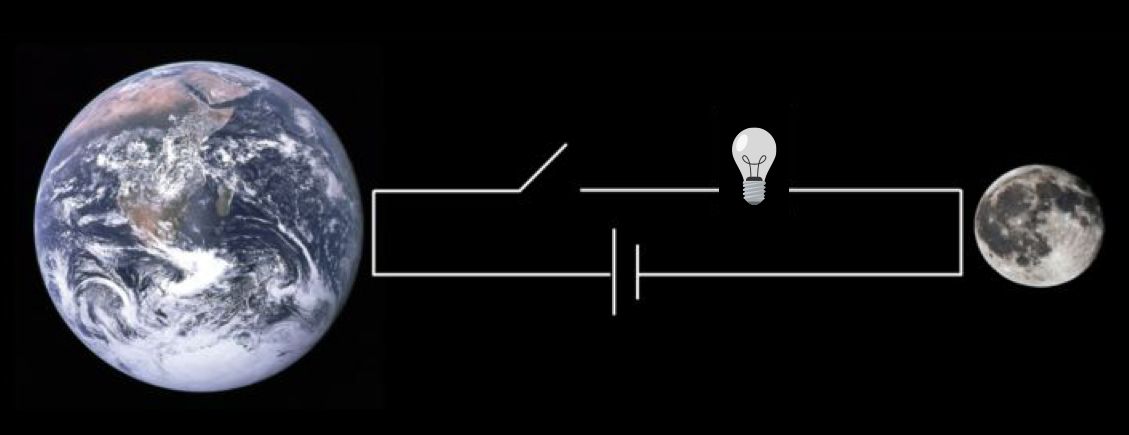A Very Long Wire

Patrick has a wire so long that it can go to the moon and come back. Patrick made a simple circuit using this wire, a battery, a switch and a light bulb.
How much time will it take for the bulb to start glowing after the switch is closed?
Details and assumptions
-
The distance between Earth and Moon is about .
-
The resistance of the wire is negligible.
This section requires Javascript.
You are seeing this because something didn't load right. We suggest you, (a) try
refreshing the page, (b) enabling javascript if it is disabled on your browser and,
finally, (c)
loading the
non-javascript version of this page
. We're sorry about the hassle.
Electric current is basically the flow of electric field. Its speed is finite, so it takes nonzero time for the current to flow through the entire circuit; it is not possible for the bulb to start glowing immediately. The speed of electric field is equal to c in vacuum. Its speed in a wire is c / μ ϵ which is slightly smaller than c : it is in the range 0 . 5 c to 0 . 9 c depending on the material of the wire.
The distance between the earth and the moon is about 3 . 8 4 × 1 0 8 m . Speed of light in vacuum is about 3 × 1 0 8 m/s , so the distance between Earth and moon is 1 . 2 8 light seconds. The length of the wire can go to the moon and come back, so it is twice this distance, and is equal to 2 . 5 6 light seconds.
Therefore the time taken for the bulb to glow is in the range of 2 . 5 6 × 0 . 5 1 to 2 . 5 6 × 0 . 9 1 seconds. This is close to 3 seconds.